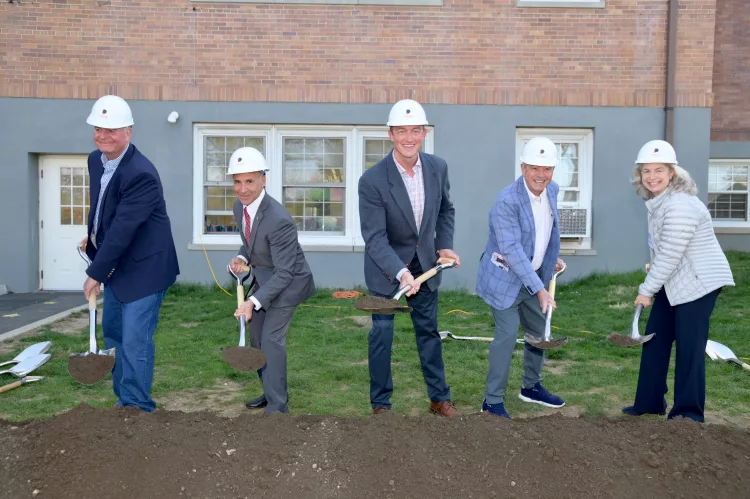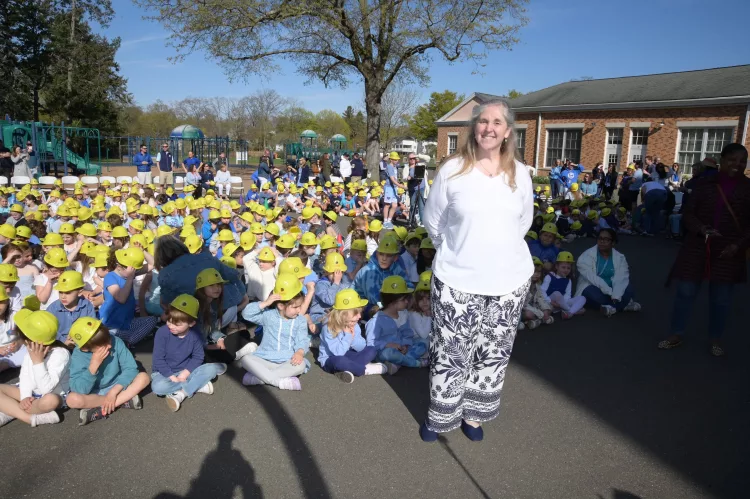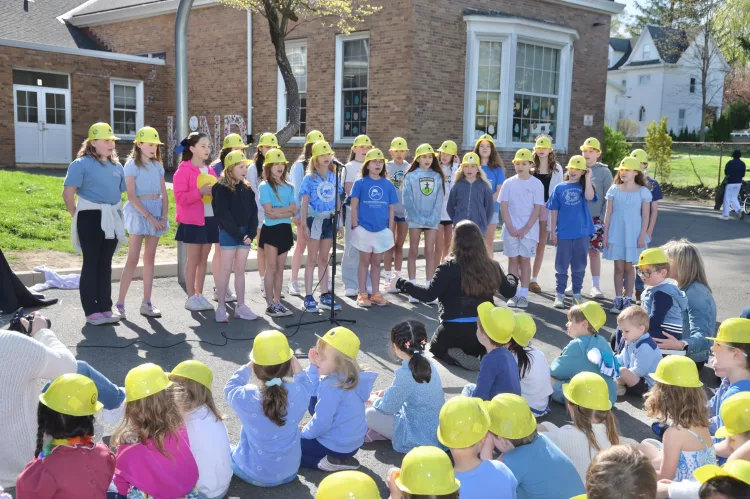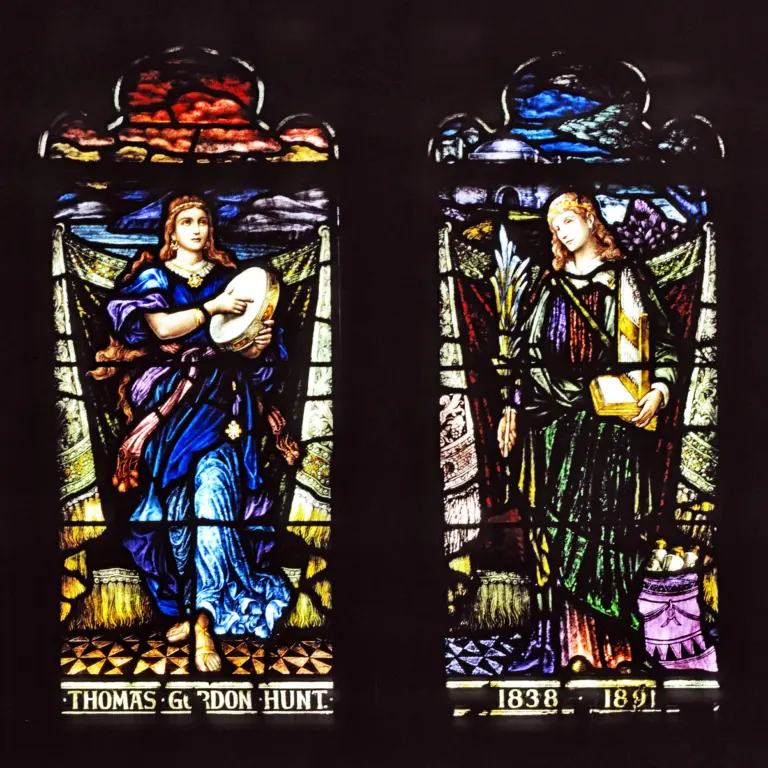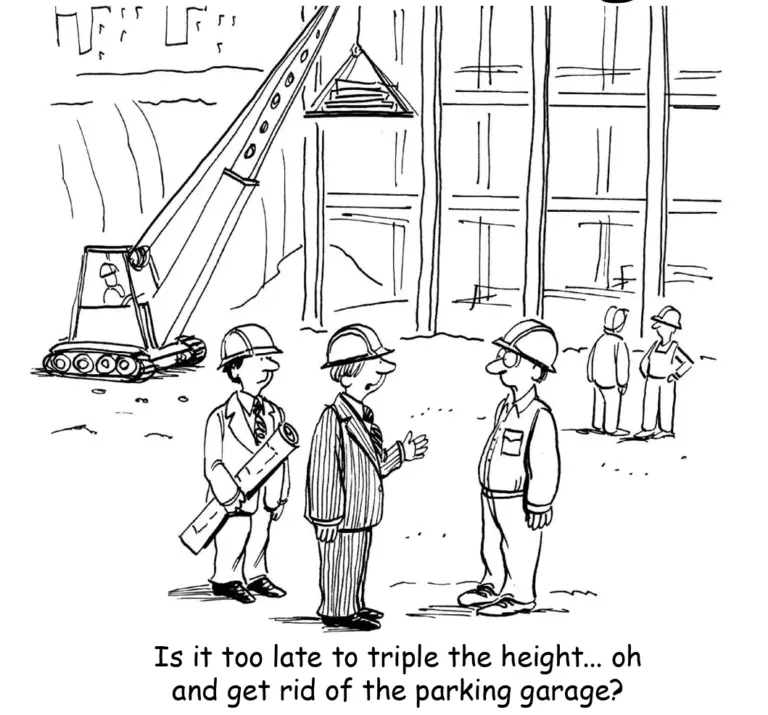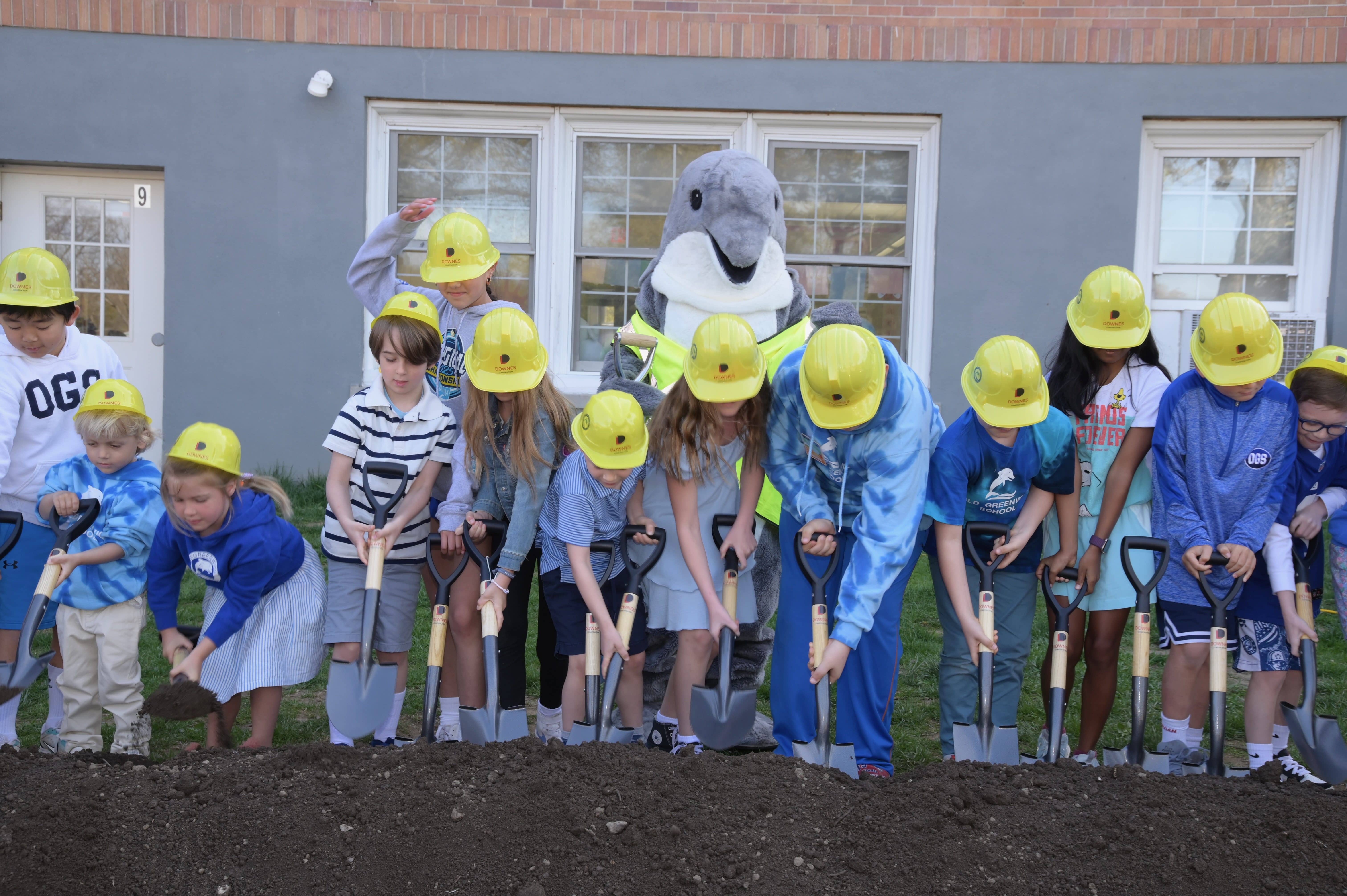
By Tom Williamson
On a beautiful spring morning, shovels hit the dirt at Old Greenwich School—not just to turn soil, but to turn the page on a years-long chapter.
After more than two years of weekly meetings, architectural revisions, and battles over compliance mandates and budget lines, the school’s ADA-compliance and renovation project broke ground. The ceremony, held on the school’s front lawn, drew out students, parents, and public officials for what organizers emphasized was not just a school event, but a neighborhood milestone.
“It was great. It was awesome,” said Michael-Joseph Mercanti-Anthony, Mike, who is the Board of Education representative on the Old Greenwich School Building Committee. “It was a beautiful day. It was two-and-a-half years of Building Committee work to get us there, and it was really neat to see all the kids out there.”
All students were invited to participate in the ceremonial groundbreaking—a move that reinforced what leaders on the scene described as a deeply collaborative effort. “It really highlighted how it was a whole community event. It was all smiles,” Mike said.
The road to this moment was neither fast nor simple.
“There’s this narrative out there that nothing gets built in town,” Mike observed. “But here’s an example—which proves that’s false. We’re building lots of things.”
Indeed, the ceremonial first dig marked more than a photo-op. It was a full-throated rebuttal to a well-worn talking point that the Greenwich Boards are slow to act, or ineffective at executing capital improvements. “Finally, after all the rigmarole, here’s an example of the Board of Education, the BET, the PTA, the leadership, and the neighbors of Old Greenwich— everybody—getting something done in a meaningful way.”
He pointed in particular to the work of the Building Committee, put together by First Selectman Fred Camillo and led by volunteers like James Waters, as a demonstration of what’s possible when residents commit to public service outside of headlines or election cycles.
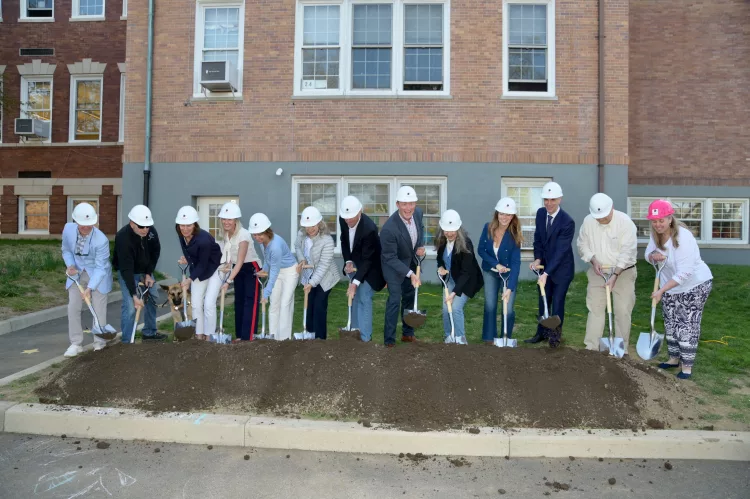
Camillo said, “seeing the community come out like that is further evidence of how strongly the community supported this project. When we interview people for a building committees, these are the outcomes that we are shooting for I thank this building committee for putting in a tremendous amount of time and effort to get us to this point and look forward to supporting them and the project through to completion. This is another example of how we get to YES.”
“The level of commitment that the people in the building committee have brought to this is really unprecedented,” Mike said. “To get to the point where you’ve got a project that’s on time, under budget, and ready to go—it’s just a boon to everybody.”
From a facilities perspective, the renovation will transform both the structure and usability of the school. The project, which is phased over two years, will begin with a four-classroom addition. Once completed, students will move into those new spaces while the remainder of the school undergoes staged upgrades.
By the project’s end, the entire building will be ADA-compliant. The school will also benefit from updated air conditioning, a redesigned and accessible front entrance, and additional classroom space to accommodate enrollment growth. According to project leads, one design priority was ensuring that the new front stairs and entrance maintain the school’s historic aesthetic while improving both safety and accessibility.
Construction is scheduled to begin in earnest this summer, after the current academic year concludes.
For all the heavy lifting still ahead — cement pours, HVAC installs, classroom logistics — the ceremony marked something no less significant: a shift in tone and trajectory.
“This is just one of many real capital improvements happening around town,” Mike concluded. “People are so used to criticizing without really paying attention. This is something that works — and maybe it’s a model for how other things can get done, too.”
